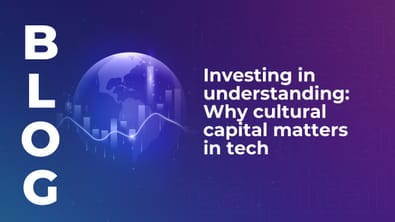
Building for Earth: The rise of planet-scale investing
Global energy transition investment hit US $2.1 trillion – but that’s only 37% of what’s needed. Here’s where investors can build for Earth.


Global energy transition investment hit US $2.1 trillion – but that’s only 37% of what’s needed. Here’s where investors can build for Earth.

A strong investment pitch earns engagement – and that enables you to build enduring relationships long after the pitch is over.

Learn why tech investors who build depth, context, and empathy are the ones shaping markets that endure.

2025’s VC landscape demands sharper targeting, smarter liquidity, and stronger leadership. Discover how investors are adapting – and why LEAP 2026 is where the next moves will be made.

Find out why four days at LEAP can redefine your deal flow and your investor brand.

Find out why leading with curiosity enables tech leaders to strengthen cybersecurity culture and build resilient teams.

Critical industries are supported by an invisible architecture – energy, finance, and logistics now depend on AI systems that make decisions faster than humans can react. And building resilience into that architecture is becoming one of the tech industry’s most urgent challenges. The team over at Black Hat MEA recently

Research shows moderate constraints boost creativity. See how cybersecurity can act as a design partner for tech innovation, offering the ideal conditions for growth.

Nuclear fusion – which mimics the power of the sun and stars — is no longer science fiction, and could emerge as a viable energy source in less than a few decades. Nuclear fusion is a complex technology that mimics the energy produced by the stars. The technology has been painstakingly worked

The Middle East region has become a hotspot for space technology, with a number of countries vying to get a foothold in the burgeoning new sector. While space has long fascinated the curious for millennia, for the past fifty years it has remained the domain of the public sector. But

Digital currencies are all the rage these days and central banks are not immune to their charm. There were more than 7,500 cryptocurrencies by the end of 2021, from around 66 in 2013, and while most are unlikely to survive, they have sowed the seeds of the popularity of

In partnership with Infobip The digitalisation of the banking industry is an ongoing trend that has fundamentally altered the way consumers interact with their banks over the last fifteen years. It all started with moving paper-based statements and transactions online to allowing customers easier access to their financial information through
No-one knows exactly what the future of jobs holds. With new jobs, technology and even industries popping up all the time, all we know is that the next generation of employees need to find a way to prepare for a future workplace that seems to be in a state of

“If technology is not geared and designed to create access and to better the conditions of everybody in society, then what is it for, really?” When we talk about innovation, we usually think of newness. New ideas, new technologies, smart inventions. But as we look into the future and imagine

Data regulation is bitty. Different countries, regions, and even different companies have their own policies, and implement those policies with a level of subjectivity (and often deceptive design) that makes it very difficult for digital citizens to get a handle on when, why, how, and by whom their data is

“We need to find a way to invest in our technological and digital sovereignty. At the same time, we [must be] able to share data in a way that does protect the rights of people, but also allows us to really harness this information.” These were the wise words of